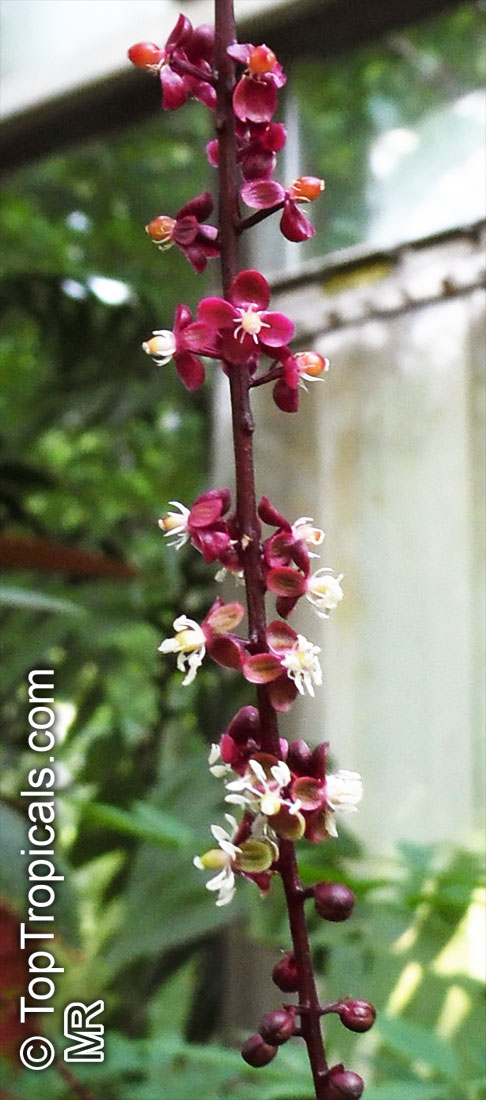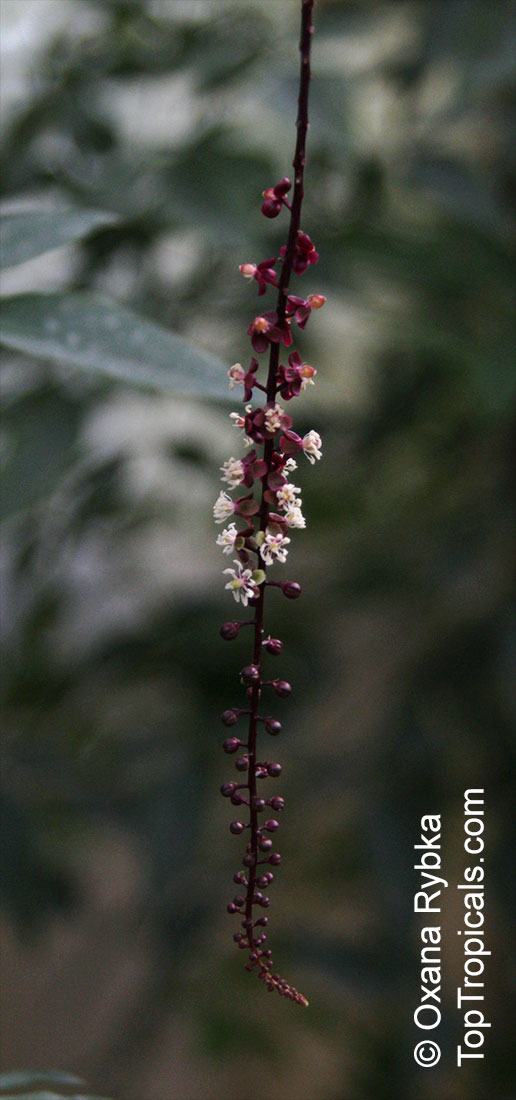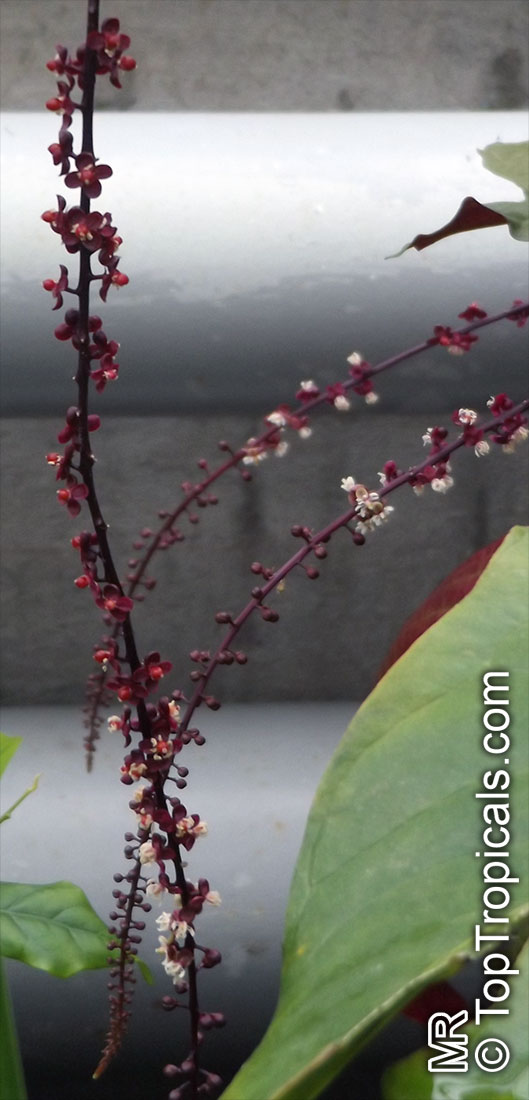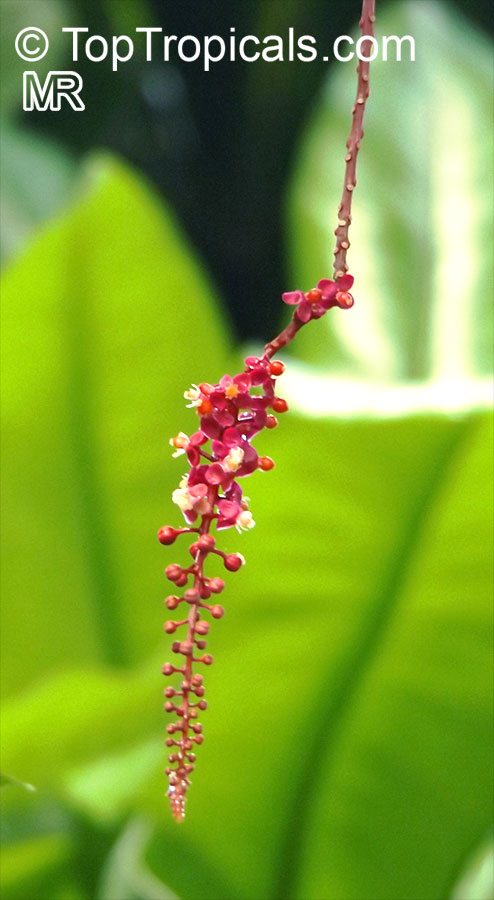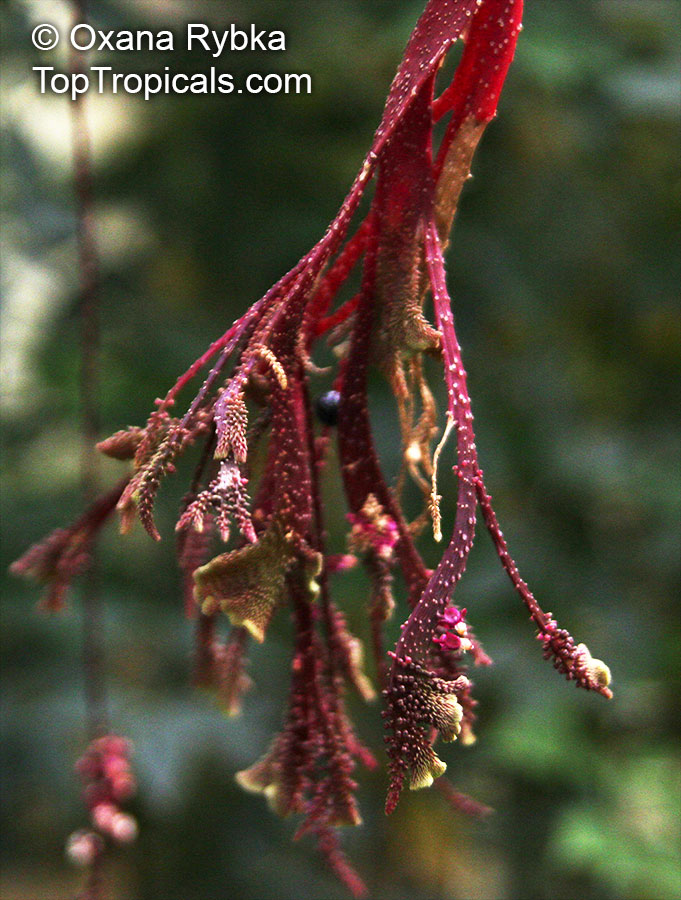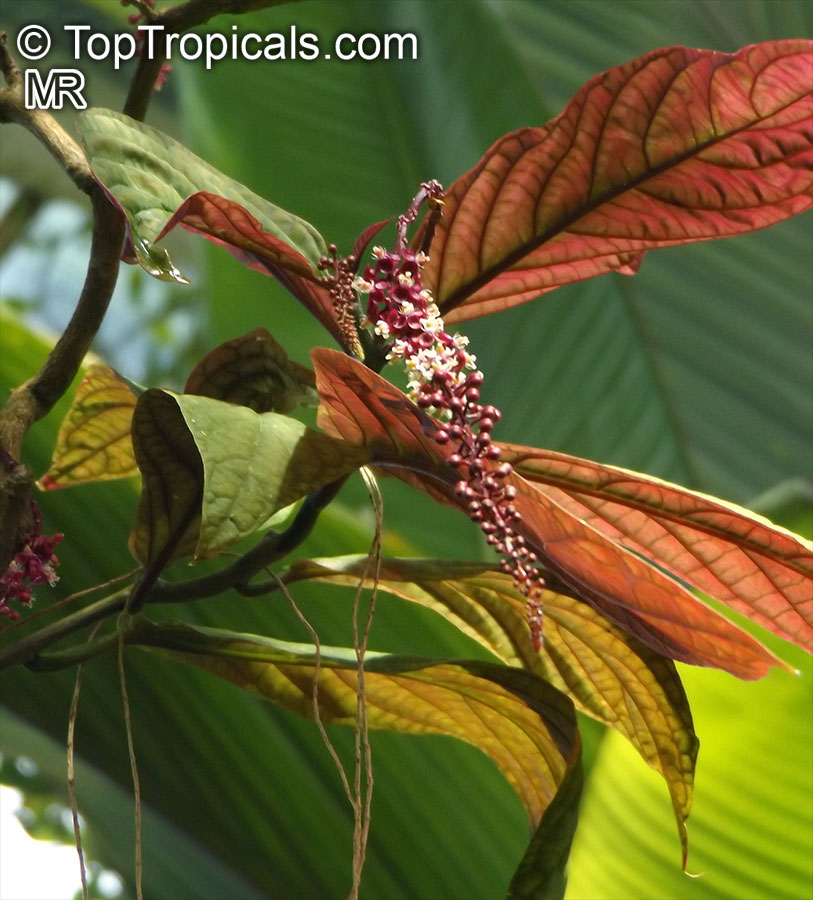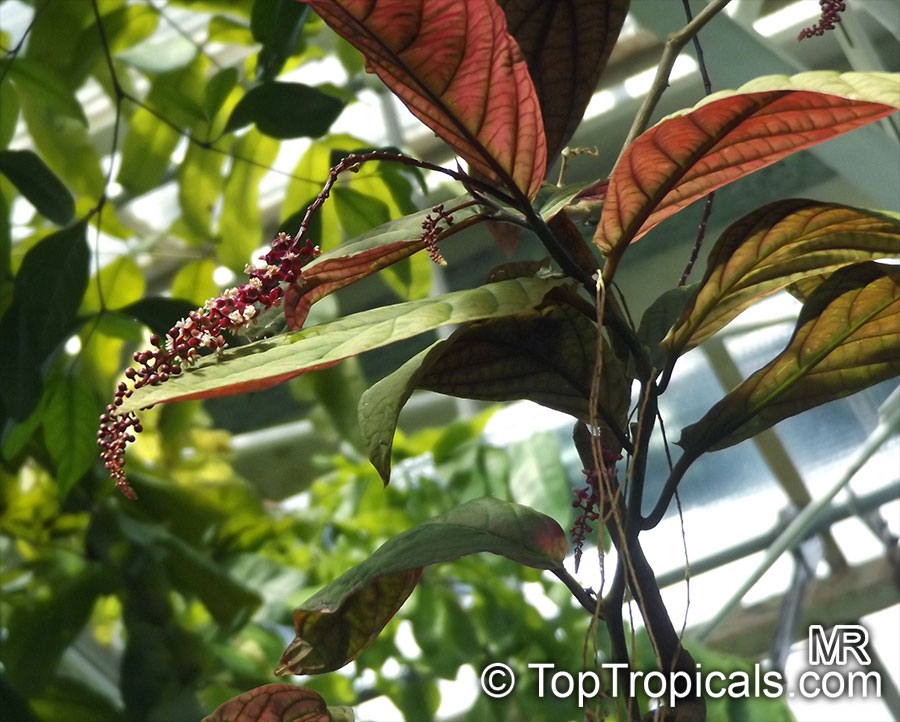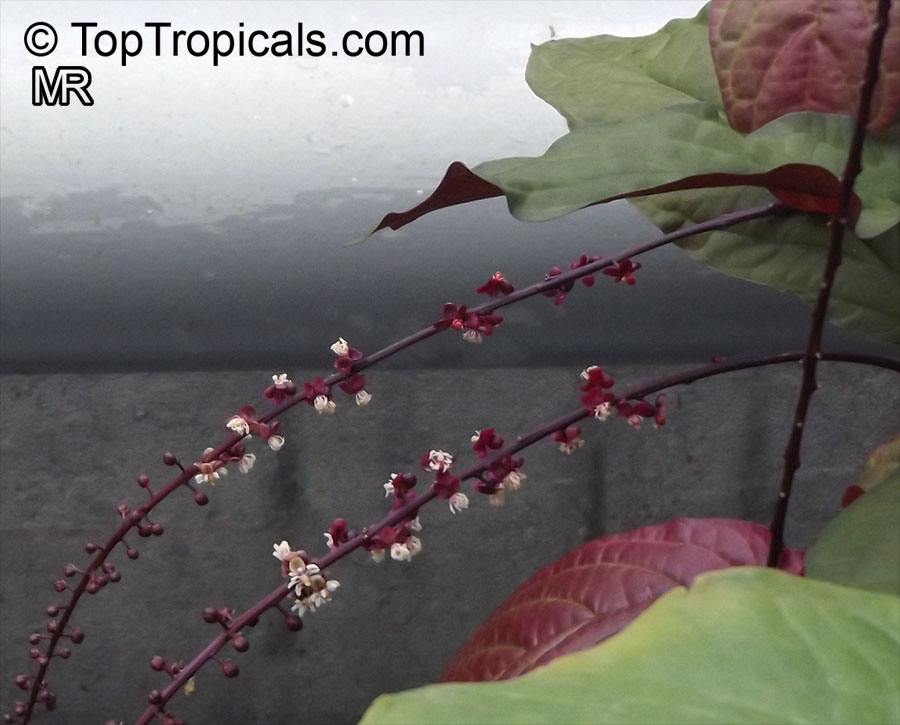Trichostigma peruvianum (Trichostigma)
Top Tropicals Plant Encyclopedia
Botanical name: Trichostigma peruvianum
Common name: Trichostigma
Family: Petiveriaceae (Formerly:Phytolaccaceae)
Origin: Ecuador, Colombia, Peru






Native to Ecuador, Colombia, and Peru, this impressive large shrub can grow to a height of 5-10 feet tall and 3-6 feet wide, making it an excellent choice for screening and hedging in humid and subtropical climates; it makes an eye-catching container specimen, too.
The Trichostigma peruvianum requires semi-shade and regular watering, but it can also tolerate drought and extreme heat once established, which is why it has become a popular plant for gardeners in USDA Zones 9-11. Its glossy green foliage has a unique velvety texture, and its habit is graceful, with arching stems that create an elegant and lush look. When in bloom, the plant's intriguing racemes of white, off-white, red, crimson, and vinous flowers make a beautiful display of color. In addition to its ornamental value, Trichostigma peruvianum has several ethnomedical uses, ranging from curing stomach ailments to providing relief from neuralgia.
When it comes to growing Trichostigma peruvianum, the right spot is one of the most important elements. It should be planted in a semi-shaded area with well-draining, loamy soil and mulched to help retain moisture. If grown in containers, the soil should be rich and generous and watered regularly while giving extra attention to exposed pots in colder regions. Trilocular capsules will appear once the flowers start to fade and can be harvested to propagate new plants.
Use link to repeat this search:
https://toptropicals.com/cgi-bin/garden_catalog/cat.cgi?search_op=and&keyword_op=and&language=e&family=Petiveriaceae
&number=10&no_change_lang=1&user=tt&sale=1&first=0
